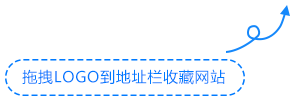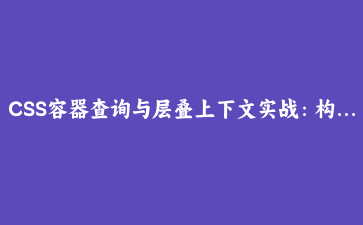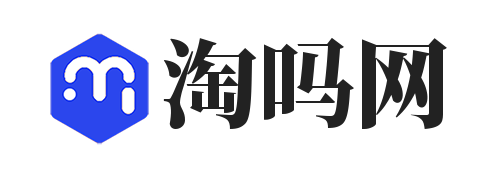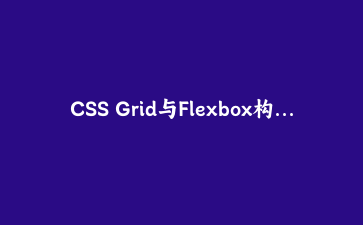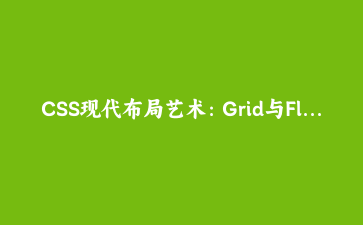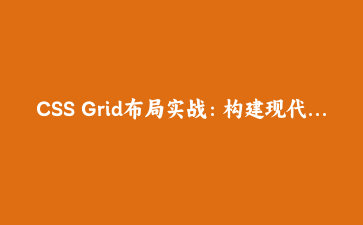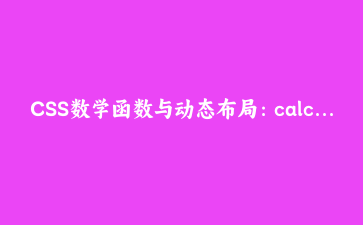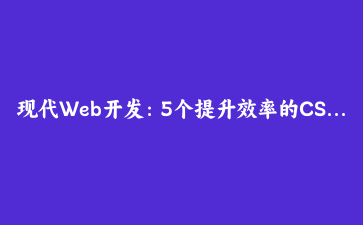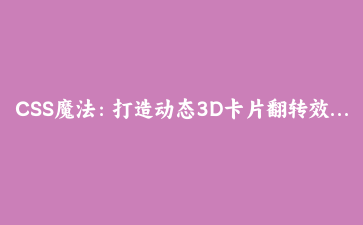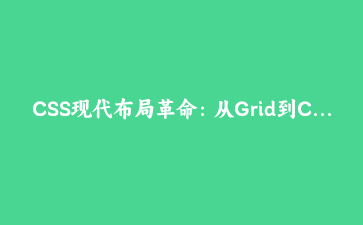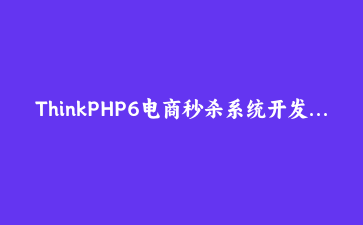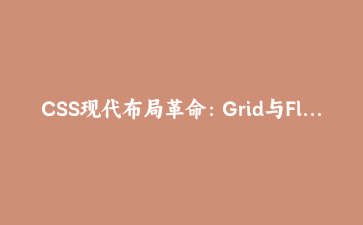一、传统响应式设计的局限性
在过去的十年中,媒体查询(Media Queries)一直是实现响应式设计的主要工具。然而,随着组件化开发的普及,基于视口(viewport)的媒体查询暴露出明显的局限性。组件无法根据自身容器尺寸做出响应,导致在复杂布局中难以实现真正的自适应。
CSS容器查询(Container Queries)的引入彻底改变了这一局面。它允许组件根据其父容器的尺寸而非视口尺寸来调整样式,为组件化开发提供了前所未有的灵活性。结合层叠上下文(Stacking Context)的深度理解,我们可以构建出更加健壮和可维护的现代Web界面。
二、容器查询基础与语法
2.1 容器类型定义
要使用容器查询,首先需要将元素声明为容器:
.component-container {
container-type: inline-size;
container-name: main-container;
}
/* 或者使用简写语法 */
.component-container {
container: main-container / inline-size;
}容器类型包括:
size:同时查询块向和内联方向尺寸inline-size:只查询内联方向尺寸(通常为宽度)block-size:只查询块向方向尺寸(通常为高度)
2.2 容器查询语法
@container main-container (min-width: 400px) {
.component {
display: grid;
grid-template-columns: 1fr 1fr;
}
}
@container (width > 600px) {
.component {
grid-template-columns: 1fr 1fr 1fr;
}
}三、实战案例:构建自适应卡片组件
3.1 基础卡片结构
<div class="cards-container">
<div class="card">
<div class="card__image">
<img src="product.jpg" alt="产品图片">
</div>
<div class="card__content">
<h3 class="card__title">产品标题</h3>
<p class="card__description">产品描述内容...</p>
<div class="card__footer">
<span class="card__price">¥299</span>
<button class="card__button">立即购买</button>
</div>
</div>
</div>
</div>3.2 容器查询样式实现
.cards-container {
container-type: inline-size;
container-name: cards-layout;
}
.card {
display: flex;
flex-direction: column;
border: 1px solid #e1e5e9;
border-radius: 12px;
overflow: hidden;
background: white;
transition: all 0.3s ease;
}
.card__image img {
width: 100%;
height: 200px;
object-fit: cover;
}
.card__content {
padding: 1rem;
display: flex;
flex-direction: column;
gap: 0.75rem;
}
/* 小尺寸容器下的样式 */
@container cards-layout (max-width: 350px) {
.card {
border-radius: 8px;
}
.card__image img {
height: 150px;
}
.card__title {
font-size: 1rem;
}
.card__description {
display: none; /* 空间有限时隐藏描述 */
}
}
/* 中等尺寸容器下的样式 */
@container cards-layout (min-width: 351px) and (max-width: 600px) {
.card {
flex-direction: row;
}
.card__image {
flex: 0 0 120px;
}
.card__image img {
height: 100%;
object-fit: cover;
}
.card__description {
display: -webkit-box;
-webkit-line-clamp: 2;
-webkit-box-orient: vertical;
overflow: hidden;
}
}
/* 大尺寸容器下的样式 */
@container cards-layout (min-width: 601px) {
.card {
display: grid;
grid-template-columns: 1fr 1fr;
gap: 1rem;
}
.card__content {
padding: 1.5rem;
justify-content: space-between;
}
.card__footer {
display: flex;
justify-content: space-between;
align-items: center;
}
.card:hover {
transform: translateY(-4px);
box-shadow: 0 8px 25px rgba(0,0,0,0.1);
}
}四、层叠上下文深度解析
4.1 层叠上下文创建条件
以下属性会创建新的层叠上下文:
/* 1. 定位元素且z-index不为auto */
.positioned {
position: relative;
z-index: 1;
}
/* 2. Flex容器的子项且z-index不为auto */
.flex-item {
z-index: 1;
}
/* 3. Grid容器的子项且z-index不为auto */
.grid-item {
z-index: 1;
}
/* 4. opacity值小于1 */
.translucent {
opacity: 0.99;
}
/* 5. transform值不为none */
.transformed {
transform: translateX(10px);
}
/* 6. filter值不为none */
.filtered {
filter: blur(1px);
}
/* 7. perspective值不为none */
.perspective {
perspective: 100px;
}
/* 8. isolation: isolate */
.isolated {
isolation: isolate;
}
/* 9. will-change指定特定属性 */
.will-change {
will-change: transform;
}
/* 10. contain: layout/paint 且包含样式 */
.contained {
contain: layout paint style;
}4.2 层叠顺序规则
在同一层叠上下文中,元素的层叠顺序(从底到顶):
- 形成层叠上下文的元素的背景和边框
- z-index为负的子堆叠上下文
- 块级元素
- 浮动元素
- 内联元素
- z-index为auto的定位元素
- z-index为正的子堆叠上下文
五、复杂布局实战:模态框与下拉菜单
5.1 高级模态框实现
<div class="modal-overlay">
<div class="modal-container">
<div class="modal-header">
<h2>标题</h2>
<button class="modal-close">×</button>
</div>
<div class="modal-content">
<p>模态框内容...</p>
</div>
<div class="modal-footer">
<button class="btn-secondary">取消</button>
<button class="btn-primary">确认</button>
</div>
</div>
</div>.modal-overlay {
position: fixed;
top: 0;
left: 0;
right: 0;
bottom: 0;
background: rgba(0, 0, 0, 0.5);
display: flex;
align-items: center;
justify-content: center;
z-index: 1000;
/* 创建层叠上下文 */
isolation: isolate;
}
.modal-container {
container-type: inline-size;
container-name: modal;
background: white;
border-radius: 12px;
box-shadow: 0 20px 60px rgba(0, 0, 0, 0.3);
max-width: 90vw;
max-height: 90vh;
display: flex;
flex-direction: column;
/* 创建独立的层叠上下文 */
position: relative;
z-index: 1;
}
.modal-header {
display: flex;
justify-content: between;
align-items: center;
padding: 1.5rem;
border-bottom: 1px solid #e1e5e9;
}
.modal-close {
background: none;
border: none;
font-size: 1.5rem;
cursor: pointer;
padding: 0.25rem;
border-radius: 4px;
/* 确保按钮在模态框内部正确层叠 */
position: relative;
z-index: 2;
}
.modal-content {
padding: 1.5rem;
flex: 1;
overflow-y: auto;
}
.modal-footer {
display: flex;
gap: 0.75rem;
justify-content: flex-end;
padding: 1.5rem;
border-top: 1px solid #e1e5e9;
}
/* 响应式模态框 */
@container modal (max-width: 400px) {
.modal-container {
margin: 1rem;
border-radius: 8px;
}
.modal-header,
.modal-content,
.modal-footer {
padding: 1rem;
}
.modal-footer {
flex-direction: column-reverse;
}
}
@container modal (min-width: 401px) and (max-width: 600px) {
.modal-container {
width: 400px;
}
}
@container modal (min-width: 601px) {
.modal-container {
width: 600px;
}
.modal-header h2 {
font-size: 1.5rem;
}
}5.2 多层下拉菜单系统
<nav class="dropdown-system">
<div class="dropdown">
<button class="dropdown-toggle">菜单1</button>
<div class="dropdown-menu">
<a href="#" rel="external nofollow" rel="external nofollow" rel="external nofollow" rel="external nofollow" class="dropdown-item">选项1</a>
<div class="dropdown">
<a href="#" rel="external nofollow" rel="external nofollow" rel="external nofollow" rel="external nofollow" class="dropdown-item dropdown-toggle">子菜单 →</a>
<div class="dropdown-menu dropdown-menu--nested">
<a href="#" rel="external nofollow" rel="external nofollow" rel="external nofollow" rel="external nofollow" class="dropdown-item">子选项1</a>
<a href="#" rel="external nofollow" rel="external nofollow" rel="external nofollow" rel="external nofollow" class="dropdown-item">子选项2</a>
</div>
</div>
</div>
</div>
</nav>.dropdown-system {
position: relative;
z-index: 100;
}
.dropdown {
position: relative;
display: inline-block;
}
.dropdown-toggle {
background: none;
border: 1px solid #d1d5db;
padding: 0.5rem 1rem;
cursor: pointer;
border-radius: 6px;
}
.dropdown-menu {
position: absolute;
top: 100%;
left: 0;
min-width: 200px;
background: white;
border: 1px solid #d1d5db;
border-radius: 6px;
box-shadow: 0 4px 12px rgba(0, 0, 0, 0.1);
opacity: 0;
visibility: hidden;
transform: translateY(-10px);
transition: all 0.2s ease;
/* 创建新的层叠上下文 */
z-index: 101;
}
.dropdown:hover .dropdown-menu {
opacity: 1;
visibility: visible;
transform: translateY(0);
}
.dropdown-menu--nested {
top: 0;
left: 100%;
margin-left: 4px;
/* 嵌套菜单需要更高的z-index */
z-index: 102;
}
.dropdown-item {
display: block;
padding: 0.75rem 1rem;
text-decoration: none;
color: #374151;
border-bottom: 1px solid #f3f4f6;
position: relative;
}
.dropdown-item:hover {
background: #f9fafb;
}
/* 处理多层菜单的层叠问题 */
.dropdown-menu .dropdown {
position: static;
}
.dropdown-menu .dropdown:hover .dropdown-menu--nested {
opacity: 1;
visibility: visible;
transform: translateX(0);
}六、容器查询与网格布局的完美结合
6.1 自适应网格系统
.grid-container {
container-type: inline-size;
container-name: grid-layout;
display: grid;
gap: 1rem;
padding: 1rem;
}
/* 基础网格布局 */
.grid-container {
grid-template-columns: repeat(auto-fit, minmax(250px, 1fr));
}
/* 小尺寸容器下的密集布局 */
@container grid-layout (max-width: 500px) {
.grid-container {
grid-template-columns: 1fr;
gap: 0.5rem;
}
}
/* 中等尺寸容器下的优化布局 */
@container grid-layout (min-width: 501px) and (max-width: 800px) {
.grid-container {
grid-template-columns: repeat(2, 1fr);
gap: 0.75rem;
}
}
/* 大尺寸容器下的复杂布局 */
@container grid-layout (min-width: 801px) and (max-width: 1200px) {
.grid-container {
grid-template-columns: repeat(3, 1fr);
grid-template-areas:
"header header header"
"main main sidebar"
"footer footer footer";
}
.grid-header { grid-area: header; }
.grid-main { grid-area: main; }
.grid-sidebar { grid-area: sidebar; }
.grid-footer { grid-area: footer; }
}
/* 超大尺寸容器下的扩展布局 */
@container grid-layout (min-width: 1201px) {
.grid-container {
grid-template-columns: repeat(4, 1fr);
gap: 1.5rem;
}
}6.2 容器查询单位:cqw和cqh
.responsive-component {
container-type: inline-size;
container-name: component;
}
.component-element {
/* 使用容器查询单位 */
padding: calc(2 * 1cqw); /* 基于容器宽度的2% */
font-size: clamp(1rem, 2cqw, 1.5rem);
margin-bottom: 1cqh; /* 基于容器高度的1% */
}
@container component (min-width: 300px) {
.component-element {
/* 在较大容器中使用相对单位 */
padding: 1.5rem;
font-size: calc(1rem + 0.5cqw);
}
}七、性能优化与最佳实践
7.1 容器查询性能考虑
- 避免过度使用容器查询,只在必要时使用
- 使用
inline-size而非size以减少布局计算 - 合理设置容器断点,避免过于密集的查询
- 考虑使用CSS变量与容器查询结合
7.2 层叠上下文优化建议
/* 好的实践:有意识地创建层叠上下文 */
.modal {
isolation: isolate; /* 性能友好的方式 */
z-index: 1000;
}
/* 避免无意中创建层叠上下文 */
.unintended-context {
/* 以下属性都会创建层叠上下文 */
/* opacity: 0.99; */
/* transform: translateZ(0); */
/* will-change: transform; */
/* 除非确实需要,否则避免使用 */
}
/* 使用现代属性管理层叠 */
.managed-stacking {
/* containment可以优化性能 */
contain: layout style;
/* isolation创建独立的层叠上下文 */
isolation: isolate;
}7.3 渐进增强策略
/* 基础样式(所有浏览器支持) */
.card {
display: block;
border: 1px solid #ccc;
padding: 1rem;
}
/* 容器查询的渐进增强 */
@supports (container-type: inline-size) {
.cards-container {
container-type: inline-size;
}
@container (min-width: 400px) {
.card {
display: flex;
flex-direction: row;
}
}
}
/* 层叠上下文的特性检测 */
@supports (isolation: isolate) {
.modal-overlay {
isolation: isolate;
}
}八、浏览器支持与未来展望
8.1 当前浏览器支持情况
截至2024年,主要浏览器对容器查询的支持:
- Chrome 105+ ✅ 完全支持
- Firefox 110+ ✅ 完全支持
- Safari 16+ ✅ 完全支持
- Edge 105+ ✅ 完全支持
8.2 即将到来的CSS特性
- 容器查询单位扩展(cqb, cqi, cqmin, cqmax)
- 样式容器查询(@container style())
- 嵌套CSS语法标准化
- CSS作用域样式(@scope)
8.3 迁移与适配建议
- 使用特性检测渐进增强
- 为不支持容器查询的浏览器提供降级方案
- 在组件库中逐步引入容器查询
- 结合CSS变量实现更灵活的响应式
